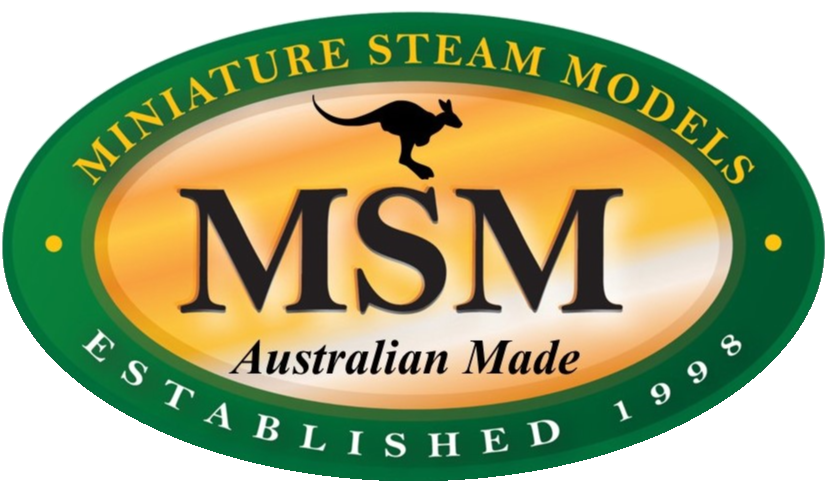There are three types of gas commonly used in firing model steam boilers. All may be labelled as LPG (Liquid Petroleum Gas) but for reasons set out below it is important to use their correct names.
They are Propane, Butane, and Isobutane. In Australia Propane is commonly labelled as LPG when used in motor vehicles, barbecues, and the like. The tanks are always constructed with heavy duty sheet steel and have a special “POL” connection system. It's primary function in model steam gas tanks/boilers is to act as a propellant as explained below.
The following table details the specific characteristics of the three gases is presented courtesy of ELGAS Ltd. (www.elgas.com.au)

Each gas is stored in liquid form which vaporises in the tank as gas is drawn off and should burn off in its gaseous form.
The liquid to gas conversion occurs at or above specific temperatures for each gas. Propane vaporises at -42°C, Isobutane at -11.75°C and Butane at -0.4°C. They are all colourless and odourless in their raw state and denser than air– i.e. They will sink to the lowest solid level possible when air is present.
This is the reason it is recommended that refillable gas tanks working
inside the hull of a boat be removed from the boat and refilled in open air.
Recommended Gas Mixture:
Our standard recommendation is to use a gas with a maximum of 30% propane and the balance either butane or isobutane or a mixture of both.
The propane acts as a propellant as well as being useful for burning as the tank empties.
We have had reports that the low temperature performance of isobutane drops of more quickly than an isobutane/propane mix. We have not been able to verify this, but consider, if correct, that it is caused by the iso-butane alone having a faster decline of pressure as the tank pressure drops than whene propane is present.
Also we have advice that in the USA there is 80% butane/ 20% isobutane product that is probably less expensive and has better cold vapor pressure than 70-30 Butane/Propane.
Pure butane is satisfactory at ambient temperatures of about +5°C and above and pure iso-butane down to about –9°C. These temperatures are “about” and higher than the defined “boiling point” because there is a gradual decay in the rate at which the liquid vaporises as the temperature approaches
the “boiling point”.
Apart from the ambient temperature there are two other factors that influence the temperature of the liquid gases in the tank.
The first is that when refilling a refillable tank, the temperatures of both the master tank and the tank being refilled, fall. The refillable tank should at least be felt warm before refitting it to the steam plant. If available a hair dryer can rapidly warm the cold or frosted tank. Also a short dunk in warm water can be helpful.
Re-connecting a tank that has frost on it is asking for a short run!
Secondly, as the gases from the refillable tank burn off, the remaining liquid in the tank cools to a point where the evaporation seriously declines. This is most likely to occur in cool climates when running with pure butane.
Identifying the gas in retail outlets – 70/30 Butane/Propane.
Unfortunately the part of the gas industry dealing with retailing these gases in small tanks has not established standards for presentation of the labelling of the contents of the tanks involved.
In an extensive search we could find no specification for the type of container that should be used for storing and selling retail quantities of the various gases used for model steam boilers, with one exception.
Propane (LPG) is extensively sold in heavy steel tanks for use in domestic situations for outdoor barbecues, heaters etc. These are too heavy to be used in model marine situations and are excluded in the following discussion.
Given the wide range of brands available on the market we have found that there is no easy way to identify a 70/30 gas tank.
Vapour Pressure:
This is a technically correct term for the gas pressure in the tank shown as “psig” or “pounds per square inch gauge” as displayed by a standard imperial measure pressure gauge, or “bar” in metric measurements. (1 bar = 14.5 psig). The table following is being referred to in the following text.

The table shows how the gas pressure in a tank, decays as the temperature of a gas in it, decreases.
The yellow highlight section is the one of most interest here in that we generally recommend the 70/30 butane/propane mix but have commented on the 100% butane as being acceptable in temperate climates.
There are two qualifiers to that earlier statement:
1. Recently have had reports of the gas jets blocking easily. We believe that the cheap 100% butane tanks are filled with very low-grade gas that easily clogs the gas jets.
2. Irrespective of the ambient conditions, if the rate of consumption of gas from a tank of butane is very rapid, the tank will cool quickly, and may well get down the temperature scale to where the evaporating (boiling) of the liquid gas slows and may eventually cause the boiler to stop for lack of heating.
We believe that a gas pressure of about 20psi is required to produce a minimum heat for a boiler, “more pressure is better” if you can achieve it. Then you can control the engine speed by adjustments to the gas flow, varying the rate of steam production.
Isobutane is also included in the relevant gases that are commercially available. We could not find an equivalent set of data as in the table, but one reliable reference stated: “Isobutane has about 64% less vapour pressure than propane but about 44% more than butane (at 21ºC)”. We think this is an endorsement for its use in cool gas situations, whether environmental, or induced by the operating conditions.
